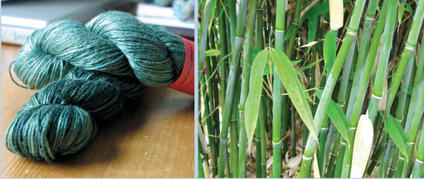The impact of the fashion industry and consumption on a global scale
by Lyssa Myska Allen, co-founder of DailyHap.com
With gift-giving season upon us, it’s important that we consider what votes we’re making with our dollars as consumers. It can be a lot to think about amidst an already-busy season, but it’s critical to understand the impact of our buying choices. In my efforts to be a “dirty hippie”—grass-fed beef, cage-free eggs, wild fish; chemical-free beauty and skincare products; more natural cleaning products—I fear I have overlooked one substantial area: fashion. I love fashion and do the occasional thrift store/consignment store shop, but had spent precious little time considering how much of an impact how I do my shopping has on the world.
I read “Waste Couture”, available here: ncbi.nlm.nih.gov and agree with its final summary: “Consumer awareness about the fate of clothing through its life cycle may be the best hope for sustainability in the fashion industry.”
Because when we choose to purchase goods, we directly influence industries, employment, ethics, and even slavery. That influence can be positive or exploitive, necessary for our own financial health or extravagant for its own sake. But no matter what, when we buy something, we’re saying something about what we can, want, or need to consume.
I purge my closets and house pretty regularly, and always donate those items to Goodwill or Salvation Army. But consider this stat from the above article: “Only about one-fifth of the clothing donated to charities is directly used or sold in their thrift shops. Says Rivoli, ‘There are nowhere near enough people in America to absorb the mountains of castoffs, even if they were given away.’” That’s not meant to discourage you from donating; rather, educate you on the realities of consumption of clothing and other goods.
A newer way to recycle clothing and other goods is the spate of online shopping/peddling sites cropping up—think eBay but more targeted, or Pinterest but directly purchase-able. Two sites that come to mind are Bib + Tuck and Poshmark, both e-commerce sites that encourage users to build up user profiles and social networks within the sites. While Bib + Tuck operates solely on a trading system (though you can buy bucks), Poshmark is cash-based, and users set the prices on their goods.
There isn’t an easy answer to the how of consumption, because consumption is a complex part of our society, and critical to its functioning. But being conscientious about how we consume can make a small, then global, impact. So let’s start being aware of the choices we’re making with our dollars this holiday season.
Image: Alternative fibers such as bamboo (in yarn and original form, above) and hemp (of a variety that produces only a tiny amount of the psychoactive component found in cannabis) are coming into greater use in so-called eco-fashions. In February 2005, as part of New York City’s Fashion Week, retailer Barneys New York and the nonprofit Earth Pledge sponsored FutureFashion, a showcase of environmentally friendly apparel.

